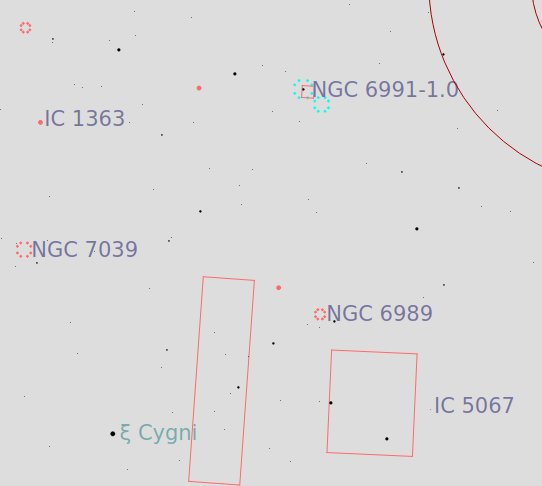KDE / KDE GSOC: Second Coding Period; Some Notes on the Catalog Repo.
TL;DR DSO catalogs in KStars are now generated reproducibly in the CI. A list of available catalogs and documentation can be found here.
As promised last time I’ll now go a little into the Catalogs Repository.
Usually DSO catalogs are pretty static and rarely change due to the nature of their contents. But although galaxies do not tend to jump around in the sky, catalogs still get updates to correct typos or update coordinates with more precise measurement. Our primary catalog OpenNGC for example gets updates quite regularly.

Figure 1: OpenNGC is being updated regularly.
And even though a catalog might not change, it would nevertheless be desirable to have a record on how it was derived from its original format in a reproducible way1. Last but not least, having all catalogs in a central place in kind of the same format would make deduplication a lot easier.
The question is: how does one define a convenient yet flexible format
that nevertheless enforces some kind of structure? My answer was: with
some kind of package definition. What about the flexibility part?
Well, basically every catalog is just a python module that must
implement a class. By overwriting certain methods, the catalog can be
built up. The framework provides certain support functionality and an
interface to some catalog database features by way of a python binding
to some KStars code. Apart from that one has complete freedom in
implementing the details although some conventions should be
followed2.
A simple random catalog looks like the following listing.
def generate_random_string(str_size, allowed_chars=string.ascii_letters):
return "".join(random.choice(allowed_chars) for x in range(str_size))
class RandomCatalogBase(Factory):
SIZE = 100
meta = Catalog(
id=999,
name="random",
maintainer="Valentin Boettcher <hiro@protagon.space>",
license="DWYW Do what ever you want with it!",
description="A huge catalog of random DSOs",
precedence=1,
version=1,
)
def load_objects(self):
for _ in range(self.SIZE):
ob_type = random.choice(
[ObjectType.STAR, ObjectType.GALAXY, ObjectType.GASEOUS_NEBULA]
)
ra = random.uniform(0, 360)
dec = random.uniform(-90, 90)
mag = random.uniform(4, 16)
name = generate_random_string(5)
long_name = generate_random_string(10)
yield self._make_catalog_object(
type=ob_type,
ra=ra,
dec=dec,
magnitude=mag,
name=name,
long_name=long_name,
position_angle=random.uniform(0, 180),
It implements only the load_objects build phase and is a kind of
minimum viable catalog.
The basic idea behind the structure of a catalog implementation is that the build process can be subdivided into four phases which can be partially parallelized by the framework.
In the download phase each catalog defines how its content may be
retrieved from the Internet or otherwise acquired. In the load/parse
phase the acquired original data is being parsed and handed over to
the framework which takes care of molding it into the correct
format. During the deduplication phase each catalog can query the
catalog database to detect and flag duplicates. And in the final dump
phase the contents of each catalog are written into separate files
which KStars can then import3.
If you are interested in the details I can recommend the documentation for the catalog repository.
After implementing the framework porting over all the existing
catalogs to the new system, I went on to configure the KDE Invent CI
to rebuild the catalogs upon changes. The CI artifacts are sync-ed to
the KNewStuff data server for KStars periodically and users are able
to update their catalogs to the latest version.
To get the CI working I had to create a Docker image that encapsulates the more or less complicated build process for the KStars python bindings. This container is updated weekly by CI and is also suitable as a quick-and-easy development environment for new catalogs.
That’s it for today but do not fret. This is not all that I’ve done. There’s still more to come including something that has to do with the following picture.

Cheers, Valentin